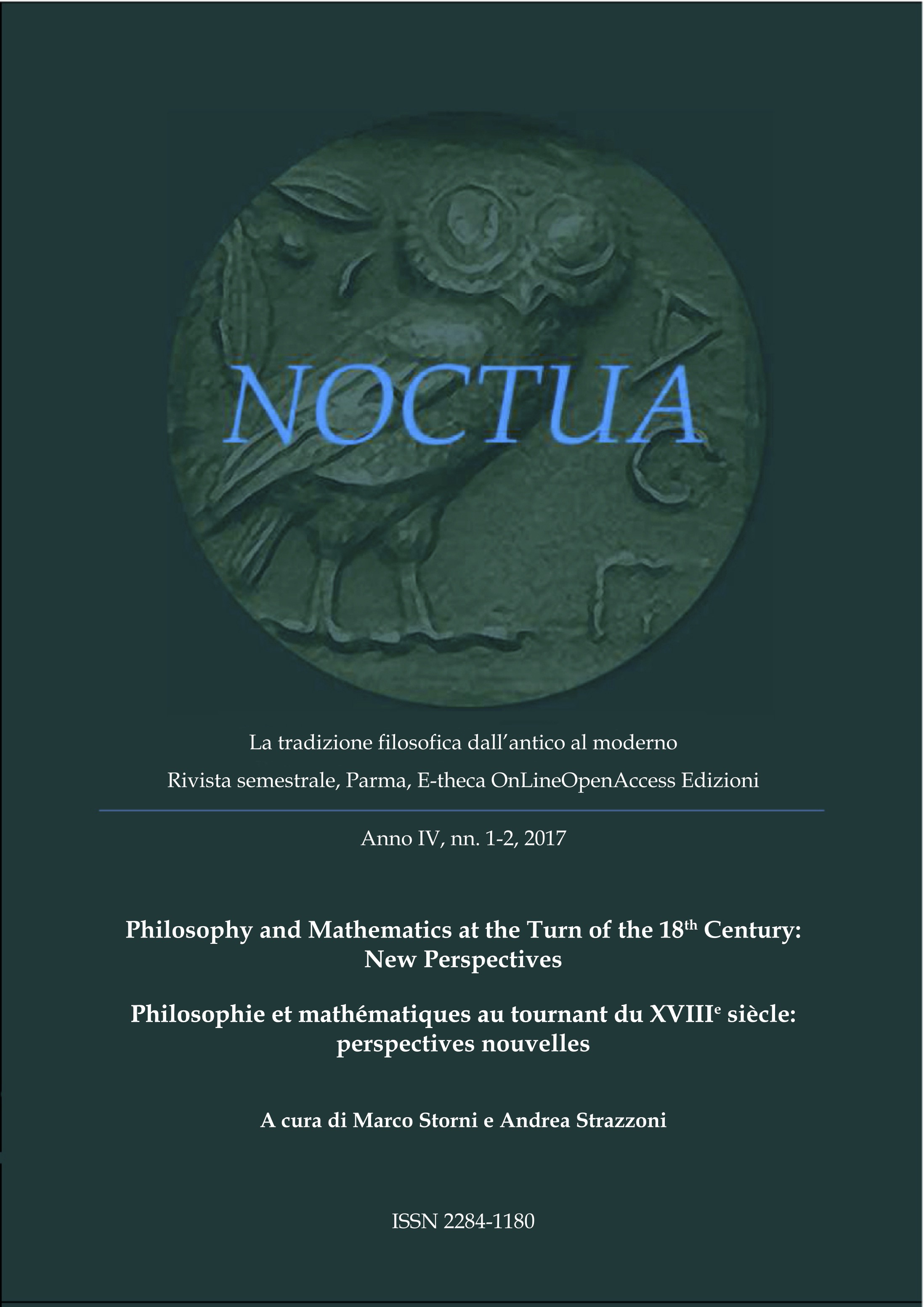’s Gravesande on the Application of Mathematics in Physics and Philosophy
DOI:
https://doi.org/10.14640/NoctuaIV2Parole chiave:
Willem Jacob ’s Gravesande, mathematics, method, Isaac Newton, physicsAbstract
Willem Jacob ’s Gravesande (1688–1742) is widely remembered as a leading advocate of Isaac Newton’s (1643–1727) work. In the first half of the eighteenth century, ’s Gravesande was arguably Europe’s most important proponent of what would become known as Newtonian physics. ’s Gravesande himself minimally described this discipline, which he called «physica», as studying empirical regularities mathematically while avoiding hypotheses. Commentators have as yet not progressed much beyond this view of ’s Gravesande’s physics. Therefore, much of its precise nature, its methodology, and its relation to Newton’s actual work remains unclear. This article discusses one particular methodological element that ’s Gravesande himself often stressed in detail, namely the use of mathematics in philosophy and physics. In doing so, it takes exception to the claim that mathematics played only a minor role in ’s Gravesande’s work, a view put forward in recent historiography. Besides that, this article casts new light on the interpretation of ’s Gravesande’s philosophical notion of «mathematical reasoning», a notion that has remained somewhat obscure thus far.
##submission.downloads##
Pubblicato
Fascicolo
Sezione
Licenza
Noctua pubblica contributi Diamond Open Access secondo i termini della licenza CC BY / Noctua publishes Diamond Open Access contributions under the terms of the CC BY license.






